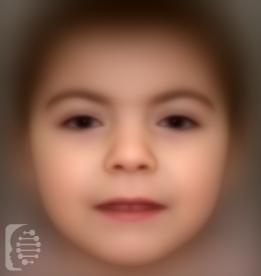What is Cornelia De Lange syndrome?
Cornelia De Lange syndrome is a genetic disorder with a widely varied phenotype. This means symptoms vary significantly between individuals both in terms of their presentation and their severity. Most patients share some facial characteristics as well as short stature and/or growth abnormality.
The syndrome is also often referred to as Brachman De Lange, CDLS, or De Lange syndrome.
Syndrome Synonyms:
BDLS; Brachmann-de Lange syndrome; CDLS; Cornelia de Lange syndrome; Typus degenerativus Amstelodamensis
What gene change causes Cornelia De Lange syndrome?
Cornelia De Lange syndrome occurs in 60% of cases when there is a mutation in the NIPBL gene. In just 10% of cases, the mutation occurs on the SMC1A, SMC3, HDAC8, BRD4, or RAD21 genes. 30% of cases have an unknown cause.
In some cases, a genetic syndrome may be the result of a de-novo mutation and the first case in a family. In this case, this is a new gene mutation which occurs during the reproductive process.
What are the main symptoms of Cornelia De Lange syndrome?
The main symptoms of Cornelia De Lange syndrome may vary between individuals and may also vary in the extent of their severity.
- Typical facial characteristics of the syndrome include a concave nasal bridge, small nose, thick and long eyebrows, a thin upper lip, and a downward mouth. Short stature is also typical of the syndrome.
- Other possible symptoms may include growth and developmental delay. Intellectual disability, and disabilities relating especially to behavior and social conditions. Autistic tendencies are common for some individuals.
- Other health conditions may include skeletal abnormalities, congenital heart defects, gastrointestinal problems, seizures, a cleft palate, and excess hair growth. Genital abnormalities, myopia and hearing loss, and missing digits on the hand and feet may also present as symptoms.
Possible clinical traits/features:
Proximal placement of thumb, Synophrys, Small hand, Short stature, Short foot, Gastroesophageal reflux, High palate, Prominent nasal bridge, Highly arched eyebrow, Hirsutism, Global developmental delay, Clinodactyly of the 5th finger, Feeding difficulties in infancy, Thin vermilion border, Limited elbow movement, Myopia, Intellectual disability, Long eyelashes.
How is it diagnosed?
To find out if someone has a diagnosis of Cornelia de Lange syndrome, it is important to have a consultation and evaluation with a clinical genetic specialist. Specialists may also suggest specific genetic testing or other types of tests to help reach a diagnosis. FDNA’s AI technology can help speed up the diagnostic process by analyzing facial features and other health information.

